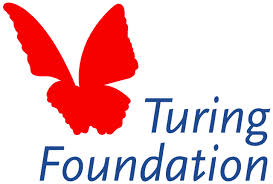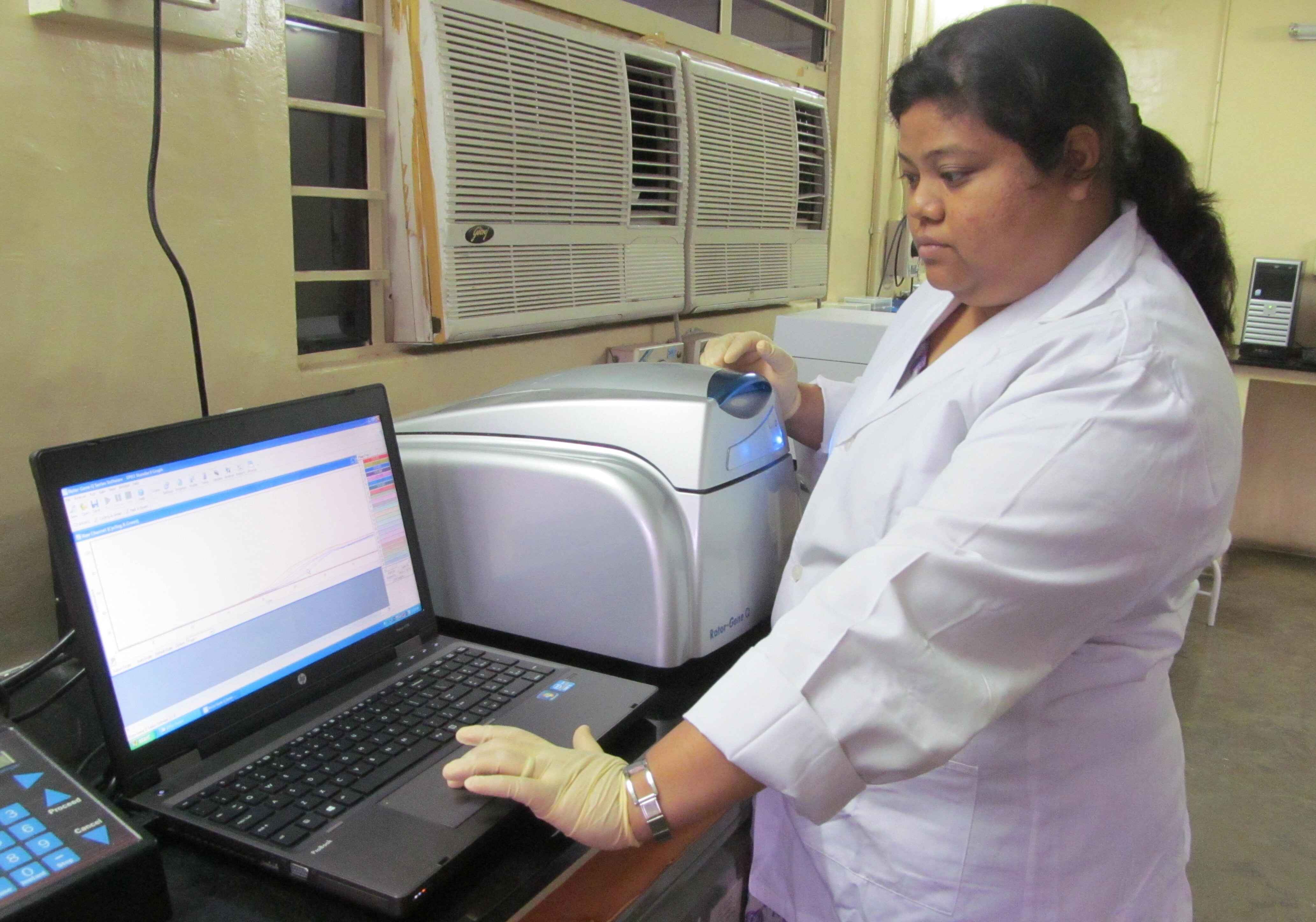Disability
- Grant: LRI Regular Grant
- Research priorities: Disability
- Country: India
- Project no.: 704.16.57
- Budget: € 147,676
- Duration: January 2016 - January 2020
- Status: Completed
- Co-funding partners: Turing Foundation

Full project title:
To identify leprosy associated Mycobacterium leprae transcriptomic and human host immune signatures that aid as early signals for determination of type I and type II reactions in leprosy
Project coordination
The Schieffelin Institute of Health-Research and Leprosy Centre (India)
Partners
Leiden University Medical Centre (the Netherlands)
Aim: This study used molecular biology techniques to develop a laboratory test for early diagnosis of type I and type II reactions in leprosy.
Final project summary Reactions are major cause of nerve damage and ensuing disability in leprosy. Mycobacterium leprae invades the macrophages incirculation and Schwann cells of the peripheral nerve cells eliciting immune responses that often exacerbate as hypersensitivity reactions. Predicting the onset of these reactional episodes may aid in early treatment interventions with anti-inflammatory drugs and prevention of consequent nerve damage. This study focused on identifying gene expression and serological markers that demonstrate an association with type I and type II reactions in leprosy.
Reactions are major cause of nerve damage and ensuing disability in leprosy. Mycobacterium leprae invades the macrophages incirculation and Schwann cells of the peripheral nerve cells eliciting immune responses that often exacerbate as hypersensitivity reactions. Predicting the onset of these reactional episodes may aid in early treatment interventions with anti-inflammatory drugs and prevention of consequent nerve damage. This study focused on identifying gene expression and serological markers that demonstrate an association with type I and type II reactions in leprosy.
Blood and skin biopsy samples were taken from the leprosy patients and genetic material was extracted. Laboratory assays were performed with this material to check the genes that show differences in function between the leprosy cases in reactions and those not in reactions. These genes are chosen and the proteins they encode are used in the development of laboratory test.
In the cross section arm of the study, the researchers conducted in-depth qualitative analysis of the genome of M. leprae and recognised differences in the expression of various genes between type I, type II and cases without any reactions. State-of-the-art whole transcriptome microarraysfrom Agilent Inc. were developed for M. leprae for the first time to study gene expressions across the transcriptome. These arrays are now commercially available for research use.
Additionally, the study explored the variations in human immune gene expressions between the study groups. Along with the gene expressionmarkers, researchers also studied variations in circulatory levels of immune molecules such as cytokines, chemokines and growth factors in the serum extracted from peripheral venous blood and T cell culture supernatant samples. Statistically significant variations in M. leprae specific and human immune gene expressions, and circulatory levels of cytokines were noted.
In the longitudinal arm, circulatory levels of cytokines and antibodies against M. leprae cell wall antigen (PGL-1) were estimated using upconverting phosphor lateral flow assay strips in leprosy cases before, during and after reactions.
Based on the inferences from both the cross sectional and longitudinal arms of the study, the researchers recommend a gene set signature involving genes ML2388 (encodes a possible membrane protein in M. leprae), ML2664 (encodes a secretory protein involved in peptidoglycanbiosynthesis in M. leprae) and CXCL10 (encodes interferon gamma inducible protein-10 in humans) for gene expression and serum levels of CXCL10 and anti-PGL-1 IgM antibodies as serological markers for reactional states in leprosy.
Impact
Das M, David D, Horo I, Van Hooij A, Tió-Coma M, Geluk A and Vedithi SC (2023) Mycobacterium leprae and host immune transcriptomic signatures for reactional states in leprosy. Front. Microbiol. 14:1113318
- Grant: LRI Regular Grant
- Research priorities: Disability
- Country: Bangladesh
- Project no.: 703.15.47
- Budget: € 23,730
- Duration: April 2015 - December 2016
- Status: Completed
Full project title:
Trial for effective plantar pressure reduction
Project coordination
The Leprosy Mission International (Bangladesh)
Partners
American Leprosy Missions (Nepal)
Aim: This study sought to quantify the differences or similarities between MCR commonly sourced in Bangladesh and footwear available in the Bangladesh market.
Final project summary
Although Micro-cellular rubber (MCR) is not available in commercially produced footwear, other comfort-enhancing products have been developed and are readily available in many markets. As MCR has a long and successful history of reducing foot ulcers, it would be ill-advised to recommend replacement materials without evidence of their efficacy.
This project compared the pressure applied on various parts of the sole of the foot while wearing different types of commercially available footwear with the pressure while wearing traditional MCR footwear. Footwear that was performing comparable to (or better than) MCR footwear was subsequently field-tested by leprosy affected persons who could not feel a 10mg monofilament and by leprosy affected persons with a history of plantar ulcers. Two commercially available models that had similar peak pressure and pressure time interval effect as MCR were identified for men and two models were identified for women. The cross over study was completed in January 2017 and the results indicate that the market footwear that was selected produced similar protection against ulcers.
Impact
Presentation at International Leprosy Congress, Beijing, 20 September 2016. Comparison of in Shoe Plantar Pressure Using MCR and Market Footwear. Bowers, B., Hossain, D., Singh, S., & Cross, H.
- Research priorities: Disability
- Country: Nepal
- Project no.: 703.15.41
- Budget: € 200,000
- Duration: September 2015 - June 2024
- Status: Ongoing
Project coordination
This study investigates if worm infection or deworming has any relevance to leprosy clinical care. The research group aims to detect risks and associations between helminth indicators, leprosy indicators and clinical outcomes including leprosy reaction development, severity and duration.
Helminth Influences in Leprosy: Indicators, Treatment, Reactions and Clinical Outcome
Project coordination
Project summary
More than 94% of global new leprosy cases are living in areas endemic for soil-transmitted helminths (STH, intestinal worms). Recent evidence indicates that intestinal worms depress immunity in general, suppressing host capacity to evict or manage other co-infection(s). For instance, current studies now indicate that allergies are more common in developed nations than nations with high rates of intestinal worms [1]. Basically, the worms long-term suppress the inflammatory responses evidenced in allergies.
In Brazilian leprosy patients, intestinal worm infections were more common in those with higher leprosy bacterial loads. Essentially, the worms suppressed the patient’s normal immune defences, likely allowing M. leprae to grow to higher numbers and thereby placing patients at higher risk for complications.
Growing evidence from other diseases such as HIV, tuberculosis and malaria indicate that deworming patients can benefit immune health and restore normal immune responses, although recovery times seem to vary on malnutrition, the specific worm(s), duration and degree of infection and if the patient has any other health conditions. Deworming seems of obvious benefit; however, there is a risk that restored immunity may suddenly overreact with strong inflammation towards co-infections that developed during the time of worm-induced immune suppression [2].
Roughly 30-50% of leprosy patients develop immune complications called leprosy reactions, which often involve inflammation of the skin and nerve. Because the nerves can be permanently damaged, reactions are the major factor for disability development in leprosy. Reactions typically are sudden shifts in the immune response, unpredictable and often requiring months to years of immunosuppressive medications before they resolve.
It is unknown what triggers leprosy reactions. Surprisingly, though, in recent years it was discovered that some arthritis treatments that suppressed immunity long term and then were halted could unmask previously subclinical leprosy by manifesting intense inflammation against leprosy bacteria once immunity was restored. In some African HIV patients, normal immunity had been decimated by the HIV virus over a long period. After receiving immune boosting medications, some unexpectedly manifested a leprosy reaction, intense inflammation by a restored immune system attacking leprosy bacteria that had sought to thrive while HIV kept defences low. Combining these patterns with what is being learned about worm co-infections, the research group proposes that worms and deworming may also be related to signs of leprosy and leprosy reaction development.
Worm co-infection may also be blocking leprosy blood test signals. In Bangladesh, malnourished children with confirmed tuberculosis and worm co-infection more often received unreadable blood test results. This was because their worm infection had suppressed the signals the test was designed to evaluate. Some developing leprosy diagnostics are targeting similar signals. Therefore, the research group also proposes that worm co-infection in leprosy may be silencing or diminishing immune responses that could be detectable by blood test. Deworming suspect leprosy cases before these blood tests and then allowing for immune recovery may allow better readout with improved sensitivity and accuracy.
The main research question is: Are common worm co-infections and deworming relevant to leprosy indicators, clinical care and outcomes?
References:
1. Smits, H.H., et al., Chronic helminth infections protect against allergic diseases by active regulatory processes. Curr Allergy Asthma Rep, 2010. 10(1): p. 3-12.
2. Jackson, J.A., et al., Review series on helminths, immune modulation and the hygiene hypothesis: immunity against helminths and immunological phenomena in modern human populations: coevolutionary legacies? Immunology, 2009. 126(1): p. 18-27.
